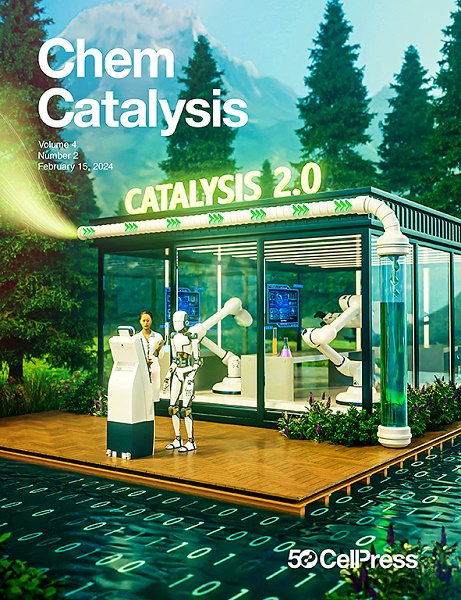用CO2进行阴极电羧化反应时,阳极反应很重要
IF 11.5
Q1 CHEMISTRY, PHYSICAL
引用次数: 0
摘要
二氧化碳(CO2)电羧基化为将有害排放物转化为有价值的产品提供了一个很有前途的解决方案,这与建立可持续的碳中和经济的更广泛目标是一致的。羧酸及其相关化合物的电化学合成已取得重大进展,广泛应用于制药和化工行业。这篇综述强调了阻碍电羧基化实际应用的主要障碍,最明显的是对牺牲阳极的依赖以及与传统反应器设计相关的低效率。它讨论了旨在克服这些障碍的最新进展和创新战略。具体来说,本文审查了牺牲阳极方法及其带来的挑战,例如需要频繁补充和阴极钝化问题。它还探讨了避免阳极消耗的策略,包括使用电解质或添加剂作为牺牲剂和采用配对电解。此外,微流控反应器在提高二氧化碳电羧基化效率方面的潜力被强调,因为它们能够提供对反应条件的精确控制。该综述最后对该领域的未来进行了展望,确定了进一步研究和开发的成熟领域,以确保二氧化碳电羧基化的工业可行性。本文章由计算机程序翻译,如有差异,请以英文原文为准。

Anodic reactions matter for cathodic electrocarboxylation with CO2
Carbon dioxide (CO2) electrocarboxylation presents a promising solution for converting harmful emissions into valuable products, which aligns with the broader goal of establishing a sustainable, carbon-neutral economy. The field has seen significant progress in the electrochemical synthesis of carboxylic acids and related compounds, which are widely used in the pharmaceutical and chemical industries. This review emphasizes the primary obstacles hindering the practical application of electrocarboxylation, most notably the reliance on sacrificial anodes and the inefficiencies associated with traditional reactor designs. It provides a discussion of recent progress and innovative strategies aimed at overcoming these barriers. Specifically, the review examines sacrificial-anode methods and the challenges they pose, such as the need for frequent replenishment and issues with cathode passivation. It also explores strategies for avoiding anode consumption, which include using electrolytes or additives as sacrificial agents and employing paired electrolysis. Furthermore, the potential of microfluidic reactors in enhancing the efficiency of CO2 electrocarboxylation is highlighted, given their capacity to offer precise control over reaction conditions. The review concludes with a perspective on the future of the field by identifying areas that are ripe for additional research and development to ensure the industrial viability of CO2 electrocarboxylation.
求助全文
通过发布文献求助,成功后即可免费获取论文全文。
去求助
来源期刊
CiteScore
10.50
自引率
6.40%
发文量
0
期刊介绍:
Chem Catalysis is a monthly journal that publishes innovative research on fundamental and applied catalysis, providing a platform for researchers across chemistry, chemical engineering, and related fields. It serves as a premier resource for scientists and engineers in academia and industry, covering heterogeneous, homogeneous, and biocatalysis. Emphasizing transformative methods and technologies, the journal aims to advance understanding, introduce novel catalysts, and connect fundamental insights to real-world applications for societal benefit.

 求助内容:
求助内容: 应助结果提醒方式:
应助结果提醒方式:


